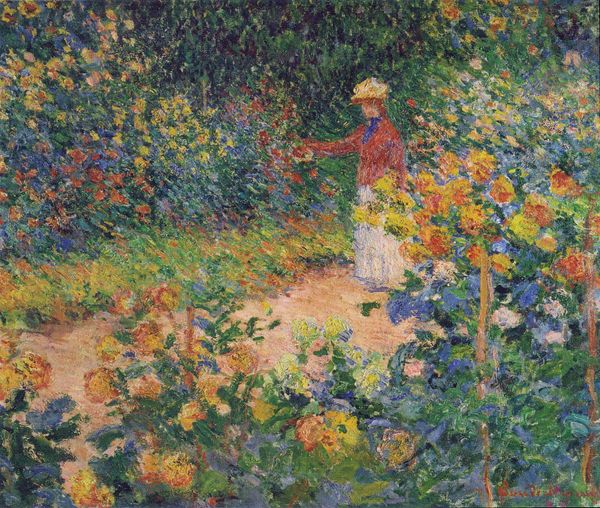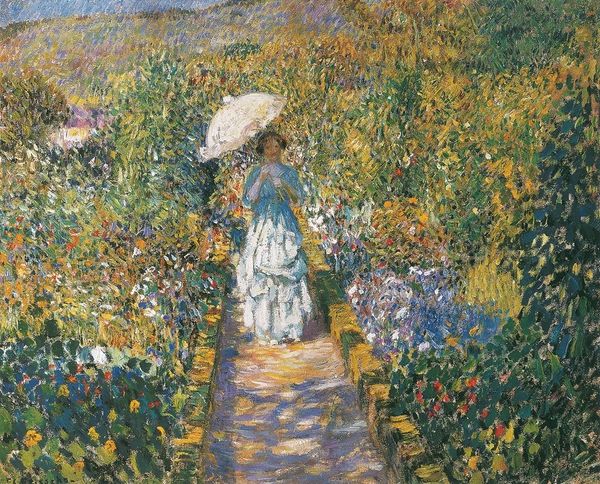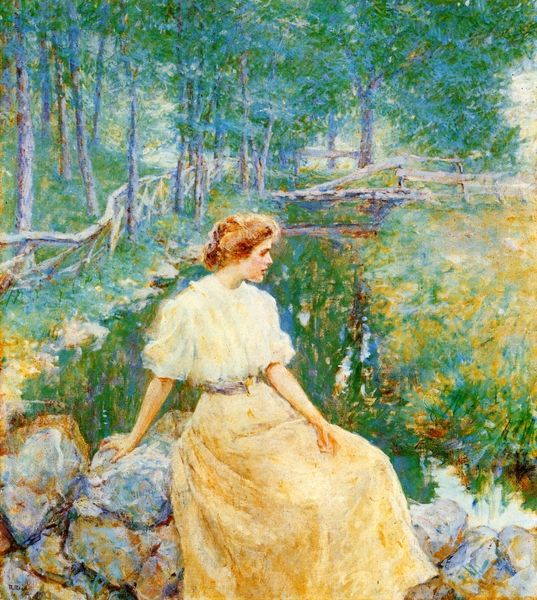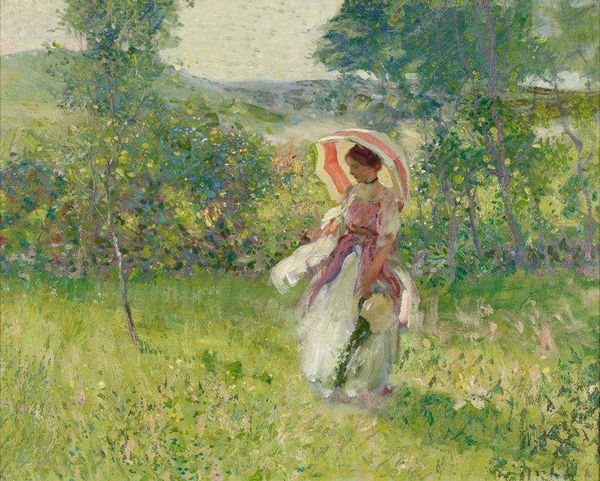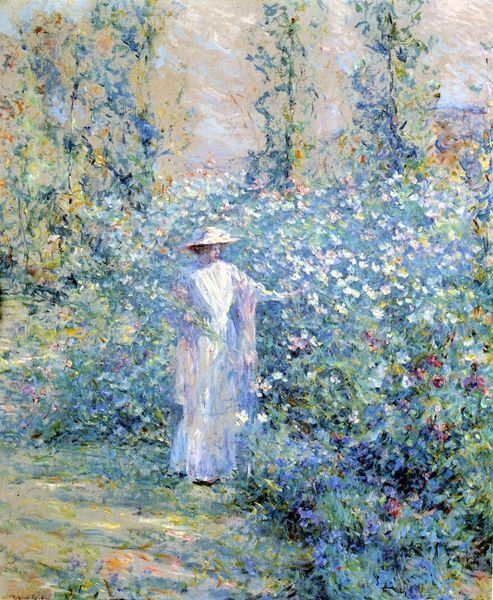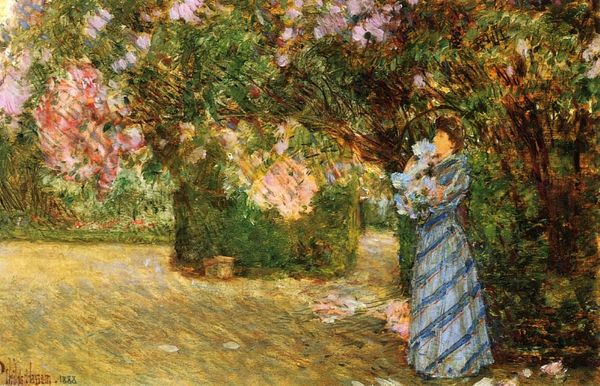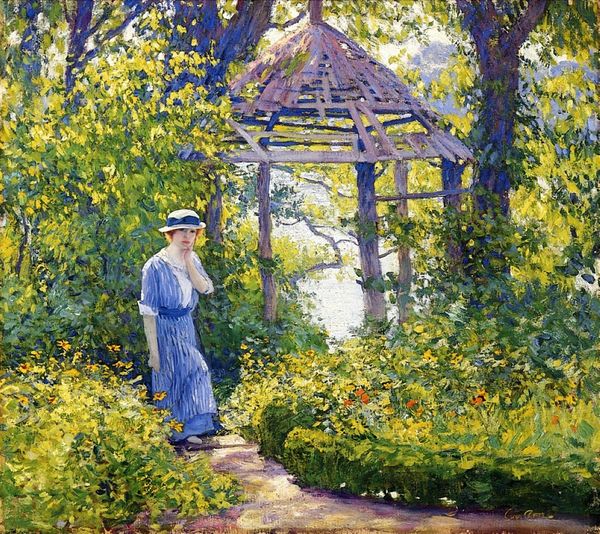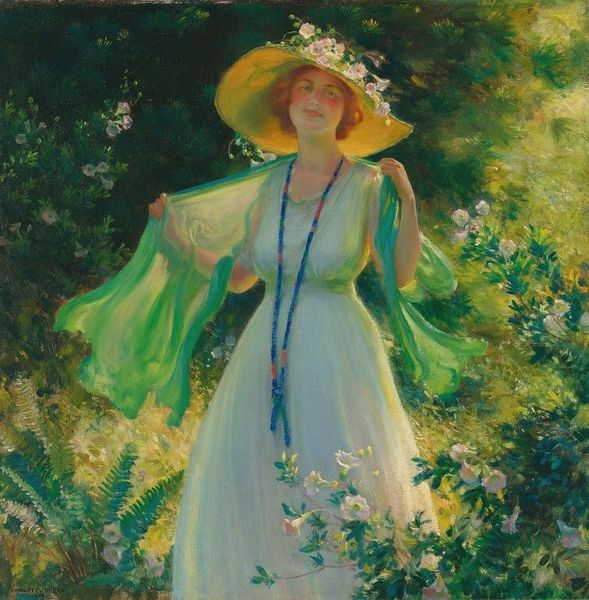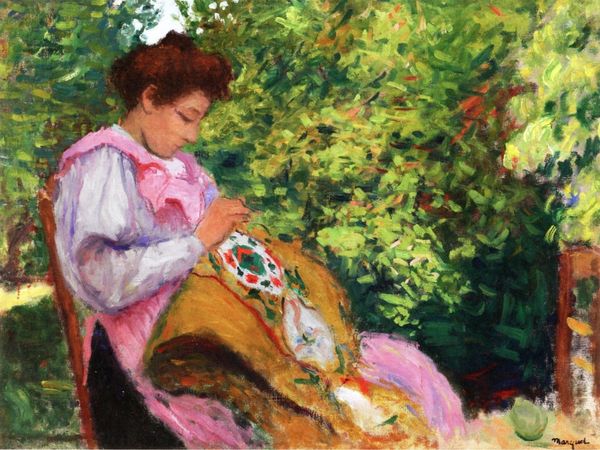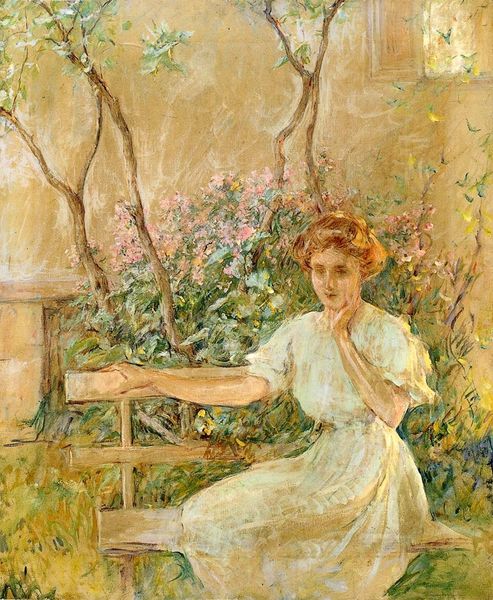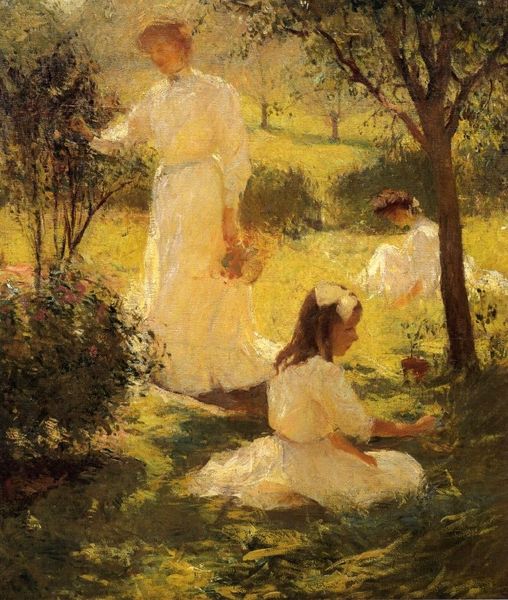
painting, plein-air, oil-paint
#
portrait
#
garden
#
painting
#
impressionism
#
impressionist painting style
#
plein-air
#
oil-paint
#
landscape
#
impressionist landscape
#
oil painting
#
genre-painting
Copyright: Public domain
Curator: Childe Hassam's oil painting, "Mrs. Hassam in the Garden," completed in 1888, presents a beautiful tableau. Editor: It feels instantly dreamlike. The light is diffused, edges blurred—it almost melts before my eyes. Is it the effect of a hazy afternoon or simply the charm of impressionism? Curator: Likely both! Hassam painted this en plein air, directly experiencing and capturing the effects of light and atmosphere. Consider the implications for Mrs. Hassam; as a subject, she had to sit for hours in that garden to fulfill the needs of artistic labor. How might she understand her place within Hassam’s project? Editor: True, though Hassam does invite us to examine how he uses colour—observe how he contrasts the darker greens surrounding her with the light reflected on her dress. The subtle use of colour evokes a feeling of tranquility. Note how the white dress almost glows. Curator: What intrigues me are the conditions which would allow Mrs. Hassam the time and space to simply *be* in that garden. Her posture, almost absorbed into the environment around her, represents a kind of social freedom and highlights her class privilege, both crucial elements in the art market of the time. Editor: But aren't we also meant to appreciate Hassam's technique? The brushstrokes themselves are expressive, each daub of paint carefully placed to create a sense of light and shadow, an exquisite texture which renders the verdant lushness of the garden and the dress. Curator: Yes, his style is recognizable and commercially successful—part of what allowed both Hassam and his subject to achieve certain forms of leisure. We can explore how such scenes supported social hierarchies in fin-de-siècle society by carefully representing certain ways of living as desirable. Editor: Still, for me, this is about the ephemeral nature of beauty. I mean, the artwork, with the way the colours dance and blend, attempts to freeze that fleeting feeling we all know as something beautiful, and makes us return, contemplate and consider it once again. Curator: Right, but through examining his techniques and their impacts on social norms, perhaps we understand it just a bit better, which, I would argue, makes the art more captivating. Editor: A fitting thought to close with; I think I can appreciate both a little more clearly now.
Comments
No comments
Be the first to comment and join the conversation on the ultimate creative platform.
